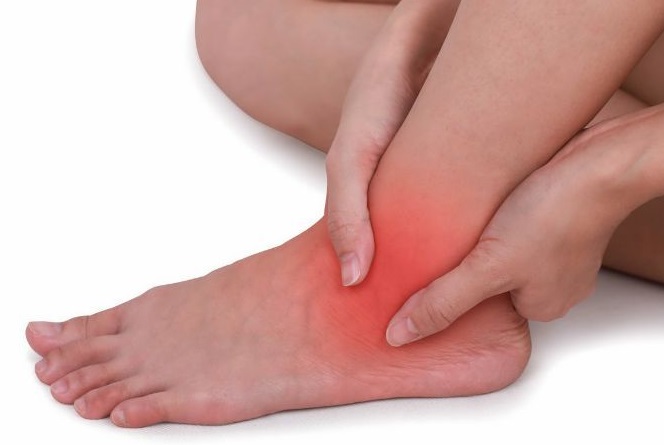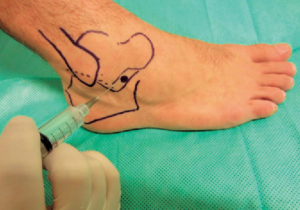The sinus tarsi is a cavity that is formed by the space between the calcaneus (heel bone) and talus bones which houses many ligaments, arteries, nerves and other connective tissues. When this area is compressed it can lead to insidious lateral ankle pain.
What are the potential causes of sinus tarsi syndrome?
There are two main ways in which sinus tarsi syndrome may arise. Firstly, trauma to the ankle joint such as rolling the ankle or an injury during sport may damage the structures within the sinus tarsi and usually precedes this condition. If these ligaments that provide stability to the subtalar joint are damaged this can lead to excessive movement and chronic ankle instability. With these increased movements, the connective tissue structures within the sinus tarsi are subjected to greater forces which may result in inflammation in the area.
Secondly, repetitive stress to the sinus tarsi caused by excessive pronation (flat feet which roll in) can also place extra stress on the sinus tarsi. With a flatter foot type, the talus bone can shift medially and rub on the calcaneus (heel bone) which creates inflammation of the soft tissue structures in this space.
 What does sinus tarsi syndrome feel like?
What does sinus tarsi syndrome feel like?
- The ankle joint may feel unstable when walking.
- Aching type pain which gets worse with prolonged activity such as walking and running.
- Tenderness over the lateral ankle.
- Pain when turning your foot in and/or pointing your foot down.
How is sinus tarsi syndrome managed?
As this condition is usually related to excessive movement whether this be caused by injury or foot type strengthening work is essential to help increase proprioception and stability around the joint. A podiatrist is able to put in place a strengthening program targeting the muscles, tendons and ligaments around the ankle joint.

Taping, padding and wedging may be used to support the foot and allow symptoms to settle. Custom foot orthoses along with appropriate footwear are a longer term strategy that can assist with controlling movement at the subtalar joint and reducing forces that are contributing to structures within the sinus tarsi becoming inflamed and aggravated.
Local anaesthetic injections into the sinus tarsi cavity are also to be able to safely performed by a podiatrist and can help to break the pain cycle.
In certain cases, if pain is chronic and is not reducing non-steroidal anti-inflammatory medication may be prescribed by a doctor or a referral for a corticosteroid injection provided to help reduce inflammation.
At Be Podiatry our experienced podiatrists can help to diagnose sinus tarsi syndrome and rule out other potential causes of ankle pain.
